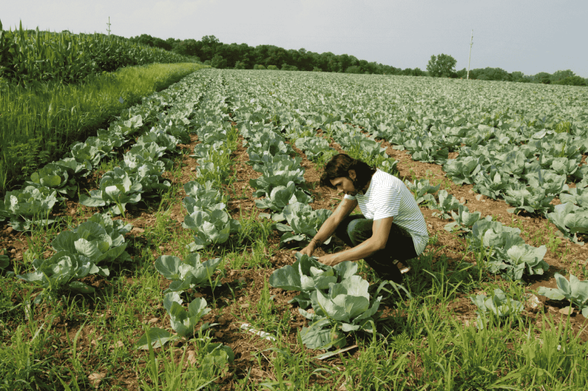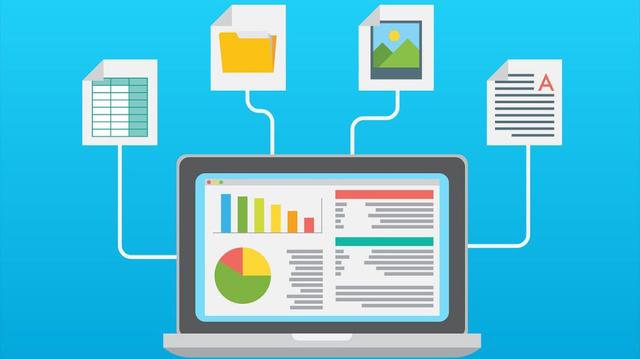#ResearchAndDevelopment
Africa: Joint Action Plans Launched to Tackle Viral Hepatitis in Africa: [Africa CDC] Considering the general decline in funding for research and development, Africa CDC, in collaboration with the World Hepatitis Alliance (WHA) and the African Viral Hepatitis Action Group (AVHAG), has developed a capacity-buildingprogramme for hepatitis elimination and advocacy. http://newsfeed.facilit8.network/TLN3Vj #Africa #Hepatitis #HealthAdvocacy #PublicHealth #ResearchAndDevelopment
https://www.alojapan.com/1296304/taiwan-semiconductor-university-of-tokyo-launch-joint-lab-for-advanced-research-and-education/ Taiwan Semiconductor, University Of Tokyo Launch Joint Lab For Advanced Research And Education #JapanAdvancedSemiconductorManufacturing #news #ResearchAndDevelopment #SemiconductorCompanies #TaiwanSemiconductor #TalentDevelopment #Tokyo #TokyoNews #UniversityOfTokyo #東京 #東京都 The University of Tokyo (UTokyo) and Taiwan Semiconductor Manufacturing Co (NYSE:TSM) announced on Thursday that they have launched a joint research laboratory dedicated…
Kumho Petrochemical Group is ramping up R&D investment to overcome industry headwinds, focusing on high value-added products and eco-friendly technologies to secure new growth engines amid global demand stagnation and Chinese oversupply.
#YonhapInfomax #KumhoPetrochemicalGroup #ResearchAndDevelopment #HighValueAddedProducts #EcoFriendlyTechnologies #ElectricVehicles #Economics #FinancialMarkets #Banking #Securities #Bonds #StockMarket
https://en.infomaxai.com/news/articleView.html?idxno=67235
Amazon Launches AI and Robotics R&D Group for Logistics Innovation
#AIAgents #amazon #artificialintelligence #ResearchandDevelopment #Robotics
https://blazetrends.com/amazon-launches-ai-and-robotics-rd-group-for-logistics-innovation/?fsp_sid=47172
Lee Jae-myung, Democratic Party presidential candidate, unveils tax incentives and R&D support to position South Korea's K-battery industry as a global leader and national strategic sector.
#YonhapInfomax #KBattery #TaxIncentives #SecondaryBattery #ResearchAndDevelopment #LeeJaeMyung #Economics #FinancialMarkets #Banking #Securities #Bonds #StockMarket
https://en.infomaxai.com/news/articleView.html?idxno=65701
Yuhan Corporation maintains zero-borrowing policy for 5 years, but consolidated debt rises 300 billion won due to subsidiary financing for R&D
#YonhapInfomax #YuhanCorporation #ZeroBorrowing #SubsidiaryFinancing #ResearchAndDevelopment #CashFlow #Economics #FinancialMarkets #Banking #Securities #Bonds #StockMarket
https://en.infomaxai.com/news/articleView.html?idxno=58525
Dr Ricardo Perez-Alvarez on harmonizing food production and nature
diesen Beitrag auf Deutsch lesen
A landscape ecologist at the University of Giessen in Germany channels his curiosity about nature into his research.
“I’m fascinated by how the natural world works,” Perez-Alvarez says. “To me, it’s kind of a puzzle where you try to put the pieces together.”
Currently, Dr Ricardo Perez-Alvarez is working to solve one of the trickiest puzzles of our time. Namely, how do we produce enough food to support a growing human population without harming the natural systems that sustain us? To tackle this question, Perez-Alvarez seeks to understand the different roles that insects play on farms. Though small in size, they have a disproportionately large impact on food production.
Perez-Alvarez sampling insect pests in a cabbage field. Photo: Ricardo Perez-Alvarez“[Insects] are critical, particularly in agricultural systems, not only as providers of beneficial processes like pollination, but also because they are providers of disservices,” Perez-Alvarez explains. “And perhaps the most well-known disservice for farmers is crop damage.”
Insect pests are capable of devouring more than one-third of crops produced each year and these losses are projected to increase as our climate continues to warm. Insecticides are the mainstream approach for controlling these kinds of pests, but they present dangers to humans and the environment. They can also become less effective over time. This is why scientists like Perez-Alvarez are researching sustainable insect control strategies that support both farmers and the environment.
Considering the bigger picture
The key to developing such strategies requires us to look beyond individual farm fields and understand how agricultural landscapes are organized at a larger scale.
“When you think about an agricultural field, this field is surrounded by other habitats,” says Perez-Alvarez. “The different habitats that surround an agricultural field influence, in a way, the processes that happen in that field.” Once we understand how farming landscapes influence insect crop pests, we have the opportunity to design them in a way that reduces pest populations.
Bringing it home
Perez-Alvarez and a farmer collaborator discuss how to set up a field experiment. Photo: Ricardo Perez-AlvarezCurrently, Perez-Alvarez is seeking funding to support a large-scale project in Colombia, his home country, to explore these questions in livestock production systems. To make space for livestock, native forests are often converted into grazing pastures. This process is one of the biggest drivers of deforestation in the tropics. However, livestock production is also an important livelihood for many smallholder farmers in Colombia. To make cattle ranching in Colombia more sustainable, there is a growing movement to reintroduce trees into cattle pastures.
Redesigning pastures to include trees provides much-needed shade for cattle and can also support different kinds of vegetation for grazing. The trees can also act like stepping stones for wildlife, helping connect different habitats across a landscape. Perez-Alvarez’s proposed project will explore if and how this increased connectivity can provide healthier pastures for cattle, and also protect biodiversity and natural habitats like forests. He hopes his research will provide farmers with tools to make their livelihoods more sustainable and profitable.
“My research is not only a playground for me, but also really can help our world become a better world. Of course in a small way. But if I can contribute my time and my expertise to make our world a better place, that would make me really happy.”
[This article is part of an occasional series in which we profile researchers who are helping us pioneer reborn articles, which make scientific findings reusable by humans and machines. You can view Ricardo Perez-Alvarez’s reborn article here: https://doi.org/10.48366/a8z1y877]‘
RAPID-FIRE REBORN ARTICLES Q&A
What motivated you to get involved with reborn articles?
When I first heard about reborn articles, I happened to be working on a meta-analysis. After experiencing first-hand the struggle of finding and extracting large amounts of data, I was curious to learn how the approach could streamline those processes. Also, the idea of setting a new standard for scientific publishing is important for ensuring science is transparent and reproducible. It’s also critical in a time when there is so much information and little time to process and digest all that information.
How do you think the approach could impact your future research?
I see it impacting my work in two ways. One, it allows me to make my own research available for the scientific community and to contribute to the open science movement. And second, as someone who reanalyzes information from published articles to explore general or global patterns, having a tool that makes it easier and more reliable to gather that information is going to help me focus on the important ecological questions, rather than spending my time doing quality control of the information I’m collecting.
How do you think we can improve the approach and encourage its adoption within the scientific community?
Implementing this approach requires behavioral changes from the scientific community, which is always hard to achieve. The scientific community can be surprisingly reluctant to change. A clear example is that we are still publishing articles the same way we did 200 years ago. However, I think scientists see more and more the need for reproducibility and transparency, so I think showing more examples of the approach implemented on articles across different research fields is a necessary first step.
The more reborn articles there are, the more useful the tool will become. Convincing new authors to publish reborn articles will be an important step in that direction. I think working alongside journal editors to increase the standards of publication will be key to getting authors on board. Even though some journals already require authors to publish their data and code, you still find a significant number of publications without data or code, or the code that is provided is not completely reproducible.
References
Stocker, M., Snyder, L., Anfuso, M., Ludwig, O., Thießen, F., Farfar, K. E., Haris, M., Oelen, A., & Jaradeh, M. Y. (2024). Rethinking the production and publication of machine-reusable expressions of research findings (Version 1). arXiv. https://doi.org/10.48550/ARXIV.2405.13129 (pre-print)
#LizenzCCBY40INT #ORKG #rebornArticle #ResearchAndDevelopment
Leibniz Data Manager (LDM): How to manage Research Data effectively
diesen Beitrag auf Deutsch lesen
Scientific discoveries rely on well-organized, accessible, and reusable research data. However, researchers often struggle with disconnected datasets, inconsistent metadata, and time-consuming data exploration.
The Leibniz Data Manager (LDM) helps solve these challenges by providing a FAIR-compliant research data management platform. LDM structures and connects research datasets using Knowledge Graphs (KGs), ensuring that data is Findable, Accessible, Interoperable, and Reusable (FAIR). Additionally, it integrates AI-assisted techniques to improve metadata enrichment and knowledge discovery, making research data more valuable and easier to work with.
Why Use LDM?
With the increasing demand for machine-readable, interoperable, and structured research data, LDM provides a powerful solution for researchers, data managers, and institutions. Whether it’s exploring datasets, enriching metadata, or linking knowledge across disciplines, LDM makes research data management smarter and more efficient.
What Makes LDM Unique?
LDM enables researchers to go beyond static repositories by:
- Structuring research data with Knowledge Graphs (KGs) – Unlike traditional databases, KGs represent data and its meaning as nodes and their connections, allowing for more intelligent and flexible ways to search and explore datasets.
- Integrating FAIR Data Principles – LDM ensures that datasets follow standard metadata models, making them easier to find, link, and reuse across disciplines.
- Supporting AI-Assisted Metadata Enrichment – LDM incorporates entity linking techniques that automatically connect datasets to external knowledge sources such as Wikidata and the Open Research Knowledge Graph (ORKG), improving data completeness and discoverability.
Key Features of LDM
- FAIR-Compliant Metadata Management – LDM applies structured vocabularies like DCAT and DataCite to ensure datasets have well-defined metadata.
- Federated Search Across Knowledge Graphs – LDM allows researchers to explore and connect datasets across multiple sources, such as ORKG and Wikidata.
- Entity Linking & Metadata Expansion – By recognizing key terms and concepts, LDM automatically enriches metadata, improving dataset descriptions.
- Dataset Comparison & Visualization – Researchers can compare datasets, highlight differences, and analyze how data relates across multiple sources and repositories.
- Live Code Execution – LDM integrates Jupyter Notebooks, enabling researchers to analyze and manipulate data directly within the platform.
- Open-Source & Scalable Deployment – LDM can be deployed as an open-source solution via Docker containers, ensuring flexibility and scalability for research institutions.
- Customizable Instances – Institutions and projects can deploy tailored versions of LDM to match their specific workflows and data management needs.
LDM is publicly available at LDM Service.
The LDM Team
Developers & Research Scientists: Mauricio Brunet, Enrique Iglesias, Dr. Ariam Rivas, Philipp D. Rohde, Dr. Ahmad Sakor, Samer Sakor
Project Investigators: Dr. Angelina Kraft, Prof. Dr. Maria-Esther Vidal
LDM Instances & Deployment: Susanne Arndt, Mathias Begoin
Media & Graphics: Gabriela Ydler
#ResearchAndDevelopment #ResearchData #ResearchDataRepository #LeibnizDataManager #LDM
Mine copper without destroying the planet? London-based project gives scientists hope https://www.theguardian.com/global/2025/mar/02/copper-scientists-london-energy-electrical #Researchanddevelopment #Environment #Technology #Pollution #Science
Is there utility in setting up crowd sourced and other collective action / #mutualaid styled #science and #researchanddevelopment co-opts to absorb and support those fired from #nsf, #hhs, #cdc, #nasa, etc?
Hell, maybe pull people out against the #coup from #spacex or #neuralink
Can we make our own #newspace, with #patreon and mutualaid ?
National Tax Service reclaims 27 billion won from 864 companies for improper R&D tax credit claims, highlighting increased scrutiny and enforcement in R&D tax incentives.
#YonhapInfomax #NationalTaxService #RDTaxCredits #TaxFraud #ResearchAndDevelopment #TaxEnforcement #Economics #FinancialMarkets #Banking #Securities #Bonds #StockMarket
https://en.infomaxai.com/news/articleView.html?idxno=51519
Three questions put to Prof Dr Sahar Vahdati
diesen Beitrag auf Deutsch lesen
Prof Dr Sahar Vahdati was appointed professor at Leibniz Universität Hannover at the beginning of October 2024 and heads the AI and Scholarly Communication research group at TIB. In this interview, she talks about her research on artificial intelligence (AI), future research topics and her career paths to date and on today’s “International Day of Women and Girls in Science”, also about the role of women in science. She is making an appeal to all young girls to dream big, believe in themselves and not let anyone set limits, because science is waiting for these girls.
Professor Vahdati, you have been leading the “AI and Scholarly Communication” research group at TIB for several months now. Can you tell us what your research involves?
As an AI scientist, my work bridges theoretical research and practical applications in scholarly communication and science. My focus is on developing AI-driven solutions that streamline the research lifecycle for scientists, while ensuring that science-based knowledge is more accessible, verifiable and impactful for society.
Prof Dr Sahar Vahdati // Photo: Sören PinsdorfA significant part of my research revolves around foundation models and their potential to drive progress toward Artificial General Intelligence (AGI). A key challenge in this domain is ensuring the factual accuracy and trustworthiness of Large Language Models (LLMs), especially in high-impact fields such as scientific research, and tackling societal challenges such as misinformation. At TIB, we have rich scientific and historical knowledge repositories that can significantly improve the factual accuracy of AI systems. By leveraging these vast knowledge assets, we can ensure that AI-driven solutions provide trustworthy, verifiable, and easily accessible information to researchers and the public. Given this unique opportunity, I have been focusing on strengthening my vision around these principles, working towards integrating structured knowledge, enhancing logical reasoning, and developing AI-powered tools that support evidence-based decision-making.
Additionally, I work on strengthening the reasoning capabilities of LLMs and developing practical AI-driven applications, such as science-based chatbots designed to combat misinformation and prevent the spread of false facts. These solutions play a crucial role in ensuring that citizens receive accurate, science-backed information, fostering greater public trust in AI and scientific communication.
Which topics or research areas are particularly important to you and offer great potential?
My research is deeply rooted in knowledge graphs, representation learning, and reasoning-enhanced AI, particularly in the context of Large Language Models (LLMs). I also explore agent-based systems and reinforcement learning to improve AI’s adaptability, autonomy and logical consistency.
In terms of application, I am particularly interested in scholarly communication as a foundation for advancing AI-driven solutions in education, psychology, medical sciences, societal discourse and environmental research. These domains benefit greatly from trustworthy AI systems that ensure factual accuracy, explainability and ethical knowledge dissemination, ultimately enhancing public trust and scientific collaboration.
Today, 11 February, is the International Day of Women and Girls in Science, which is intended to honour the role that girls and women play in science. The proportion of female professors in Germany is still unequal, with less than a third being female. How did you get into science and what was your path to a professorship like?
Beside my personal journey, I also reflect on the importance of representation, encouragement and empowerment for young girls who dream of a future in science. One of my key missions is to show young girls that everything is possible—they are capable of achieving anything they can imagine. It all starts in the mind.
From a young age, I was drawn to knowledge and discovery, becoming my city’s youngest library member at four. Recognizing this, my parents unknowingly nurtured my future by playing a game where I acted as a university professor, answering their questions about my “lectures.” What started as play became a powerful affirmation – shaping my aspirations. However, my journey was not easy. I have always been in the minority – being born and raised in Iran, where women’s rights are currently severely restricted, I truly understand what it means to yearn for freedom, equality and opportunities. After living in Germany for more than 15 years, I have had the privilege of experiencing two different realities for women in science and women freedom. In Iran, women must constantly fight for their most basic rights, while in Germany, they are encouraged to dream, lead, and contribute to society on equal footing. This contrast has shaped my deep appreciation for my Chosen Homeland, Germany, for freedom in life – it strengthens my commitment to empowering young women to pursue their dreams in science and academia.
The road to becoming a professor has been challenging but deeply rewarding. If I could do it, so can other women and girls. It requires being able to dream, and work hard and motivated towards that. A supportive family and an encouraging society can make the journey easier, but even if you lack these privileges, you can still succeed – you can create opportunities for yourself through determination and belief in your own potential.
“Woman, Life, Freedom” is and will always be the right slogan for us. To all young girls out there: dream big, believe in yourself, and never let anyone define your limits. Science is waiting for you!
About Prof Dr Sahar Vahdati
Since 1 October 2024, Prof Dr Sahar Vahdati heads the research group “AI and Scholarly Communication” at the TIB – Leibniz Information Centre for Science and Technology and University Library in Hannover. At the same time, she has taken up her position as Professor for “Data Science and Digital Libraries” at TIB and the Faculty of Electrical Engineering and Computer Science at Leibniz Universität Hannover. Her research focuses on knowledge graphs, representation learning and reasoning-enhanced AI, particularly in the context of Large Language Models (LLMs).
Before joining Leibniz Universität Hannover (LUH) and TIB, Prof Dr Sahar Vahdati, born in 1983, led the Nature-Inspired Machine Intelligence research group at TUD Dresden University of Technology () within the ScaDS.AI Center of Excellence. This cross-organisational group was initially established at the InfAI Institute – Leipzig University, which she initiated and later continued at TUD. The group will continue its mission, now with the involvement of TIB and LUH.
Prior to that, Vahdati was a postdoctoral researcher at the University of Oxford, focusing on advanced AI methodologies. She completed both her master’s and Ph.D. in Computer Science at Rheinische Friedrich-Wilhelms-Universität Bonn, where she laid the foundation for her research in AI, machine learning and knowledge representation.
#ArtificialIntelligence #Interview #LizenzCCBY40INT #OpenResearchKnowledgeGraph #ResearchAndDevelopment
𝐏𝐫𝐚𝐯𝐞𝐠𝐚 𝐕𝐞𝐧𝐭𝐮𝐫𝐞𝐬 𝐋𝐞𝐚𝐝𝐬 $𝟑𝐌 𝐈𝐧𝐯𝐞𝐬𝐭𝐦𝐞𝐧𝐭 𝐢𝐧 𝐂𝐨𝐧𝐬𝐭𝐞𝐥𝐥𝐢’𝐬 𝐃𝐞𝐟𝐞𝐧𝐬𝐞 𝐒𝐨𝐥𝐮𝐭𝐢𝐨𝐧𝐬
https://tekginger.com/pravega-ventures-leads-3m-investment-in-constellis-defense-solutions/
#pravega #InvestmentNews #defensetechnology
#constelli #deeptech #innovations #startup #DefenseInnovation
#technews #technology #indiatech #salesandmarketing #researchanddevelopment #defencestartup #technews
UK can be ‘AI sweet spot’: Starmer’s tech minister on regulation, Musk, and free speech https://www.theguardian.com/technology/2025/jan/11/uk-can-be-ai-sweet-spot-starmers-tech-minister-on-regulation-musk-and-free-speech #Artificialintelligence(AI) #Researchanddevelopment #Childprotection #MarkZuckerberg #Internetsafety #SiliconValley #Digitalmedia #JessPhillips #Socialmedia #DonaldTrump #Technology #PeterKyle #Economics #Politics #ElonMusk #Internet #Business #Science #UKnews #Brexit #Media #X



